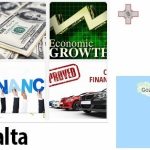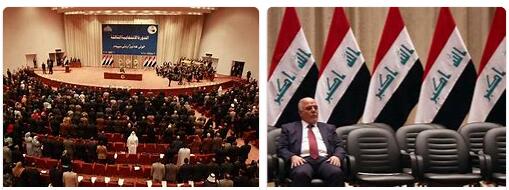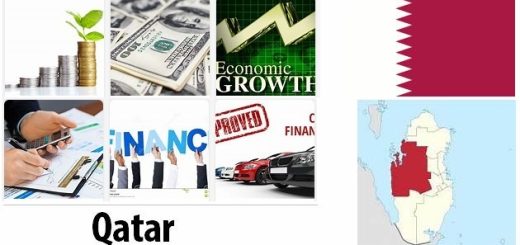Bahrain Economy Facts
Economical overview
Since the 1930s, oil and natural gas have formed the basis of Bahrain’s economy, which therefore goes up or down with the world market price of oil. A new oil and gas discovery announced in 2018 has raised hope for extended life for the industry, but Bahrain is trying to broaden its business, including increasing manufacturing and service industries. Today, the country has a strong banking system and is an important financial center in the region.
As oil prices rose in the early 2000s, economic development turned upward and the country experienced a decade of strong growth. By contrast, the global financial crisis of 2008-2009, when the price of oil fell, contributed to a slowdown in growth rates.
- Countryaah.com: Major imports by Bahrain, covering a full list of top products imported by the country and trade value for each product category.
The recovery in the world finances in the years that followed contributed again to increased growth, but then political unrest that erupted in the context of the Arab Spring 2011 had a negative impact again. This was especially true of the financial sector and the tourism industry, when foreign investors and tourists behaved cautiously. The construction industry also stopped. The International Monetary Fund (IMF) warned Bahrain of growing budget deficits. In addition, oil production fell sharply in 2012 due to technical problems at the Abu Saafa oil field, and the sharp fall in oil prices in 2014-2015 posed a new challenge for Bahrain.
After repair work on the Abu Saafa field in 2017, production increased again. The years after that, the economy showed growth of around 2 percent. With some exception, inflation has been kept at a low level. Operator at Abu Safaa is Saudi Aramco. In many respects, Bahrain benefits from strong support from Saudi Arabia, both financially and politically. In 2018, neighboring Saudi Arabia, Kuwait and the United Arab Emirates entered a $ 10 billion five-year aid package to Bahrain. But the Saudi regime’s liberalization of the entertainment market could diminish Bahrain’s attractiveness to Saudi holidaymakers and then revenue will disappear, the World Bank noted in a forecast 2018.
- Abbreviationfinder.org: Check this abbreviation website to find three letter ISO codes for all countries in the world, including BHR which represents the country of Bahrain. Check findjobdescriptions to learn more about Bahrain.
The Corona pandemic and an international oil price war that erupted at about the same time have also caused a new economic crisis for Bahrain. A crisis package worth $ 11 billion was promised in March 2020. The following month, government budget cuts were announced, which will affect construction and consulting projects, among other things. The government also understood that reduced benefits for citizens could be expected.
High unemployment is a major problem, as is the uneven distribution of the country’s wealth. Bahrain has a high income per inhabitant, but there are still many poor people, especially among the Shiite Muslim majority.
In order to accelerate the expansion of the economy, reduce oil dependency and counteract rising unemployment, the regime began to open a number of economic sectors for private ownership in the 2000s: tourism, IT, education, health, service and the oil and natural gas industry. International banks were attracted to the country with a well-developed banking system, good telecommunications and aviation connections.
In the country there are several good ports, including the large deep water port Mina Salman in northern Bahrain and Khalifa bin Salman port, which was inaugurated in 2010 near a newly built industrial zone on the island of al-Muharraq. Both ports are operated privately.
Four railway lines, which can almost be described as commuter trains for public transport, are planned. In addition, a railway is planned for both freight and passenger trains to Saudi Arabia, in parallel with a 2.5-mile long road and bridge connection that has been in use since the 1980s. If the corona crisis delays the new projects were not clear months into the pandemic.
Bahrain is dependent on food imports and also imports transport and machinery. Important trading partners are other countries on the Arabian Peninsula. China, Brazil, the EU and the US are important especially for imports.
Together with other countries in the Gulf Cooperation Council (GCC), Bahrain set up a common market in 2008; however, plans to introduce a single currency have been postponed in the future (see Foreign Policy and Defense).
With 2005, Bahrain has a free trade agreement since 2005. It initially faced criticism from Saudi Arabia, who considered it to be in violation of the GCC rules and made it difficult for the GCC countries to move forward in economic cooperation. The GCC decided to allow this agreement as an exception, as well as a bilateral agreement between the United States and Oman. However, future trade agreements should be negotiated jointly within GCC.
Bahrain has been a member of the World Trade Organization (WTO) since 1995.
FACTS – FINANCE
GDP per person
US $ 24,051 (2018)
Total GDP
US $ 37,746 million (2018)
GDP growth
1.8 percent (2018)
Agriculture’s share of GDP
0.3 percent (2018)
Manufacturing industry’s share of GDP
17.6 percent (2018)
The service sector’s share of GDP
55.3 percent (2018)
Inflation
1.4 percent (2019)
Government debt’s share of GDP
94.7 percent (2018)
Currency
Bahraini Dinar
Merchandise exports
US $ 15,376 million (2017)
Imports
US $ 16,076 million (2017)
Current account
– US $ 1,600 million (2017)
Commodity trade’s share of GDP
87 percent (2018)
Main export goods
oil, oil products, aluminum
Largest trading partner
Saudi Arabia, Qatar, Oman, China, Japan, India, Brazil, USA, EU













